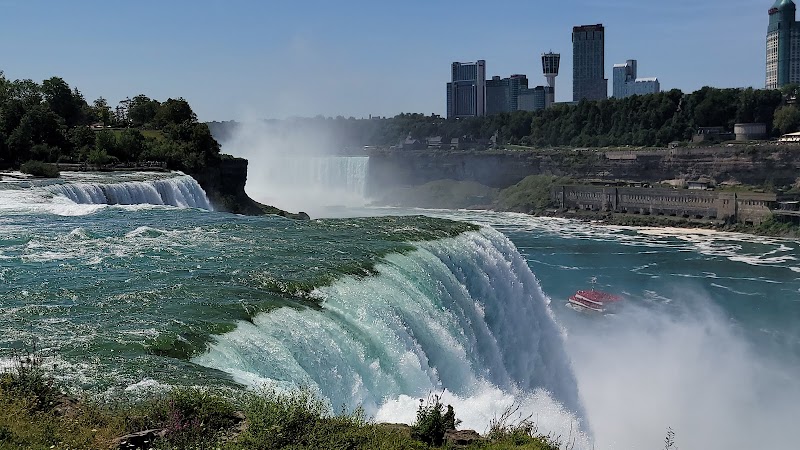
The Markham Marathon in Ontario blends city streets with green spaces, offering a marathon experience that is both accessible and engaging. Whether you're a first-time marathoner or a seasoned runner, this route challenges your endurance amid a supportive urban and natural environment.
Hydrate Wisely
Take advantage of the water stations every 5 kilometers but carry a small hydration pack for backup during warmer weather or to maintain consistent sipping.
Choose the Right Footwear
Opt for running shoes designed for road surfaces with some cushioning to handle the asphalt and occasional trail patches comfortably.
Schedule Your Warm-Up
Allow at least 20 minutes before the race start for stretching and light jogging to avoid injury on what can feel like a deceptively flat course.
Plan for Variable Weather
Late spring weather can switch from cool to warm quickly; layer your clothing so you can adjust on the fly without slowing your pace.
Markham Marathon: A Practical Guide to Ontario’s Urban Running Adventure
Stretching across the vibrant cityscape of Markham, Ontario, the Markham Marathon offers a unique blend of urban energy and green corridor respite for runners of all levels. The course winds through city streets, quiet park trails, and suburban neighborhoods, keeping the terrain varied but approachable. Covering a full 42.2 kilometers, this marathon places practical demands on your endurance while inviting you to engage with an environment that is as determined as you are.
Preparation is key. The course is mostly flat with only mild elevation changes, making it friendly to both casual runners eyeing their first marathon and seasoned athletes aiming for personal bests. Asphalt dominates the surface underfoot, occasionally shifting to compact trail sections that trace the edges of parks and conservation areas. Expect comfortable conditions if you run in the cool air of early morning, but be ready for humidity as summer months kick in.
The surrounding greenery acts almost like a silent coach—trees lining parts of the route stretch tall, their branches brushing the sky, daring you to keep pace. Rivers and small creeks cross under bridges, almost pushing you forward with their current, a quiet challenge to maintain your rhythm. Urban parks such as Toogood Pond provide brief, refreshing glimpses of water and birdlife, breaking the monotony of the pavement.
Markham Marathon’s timing typically falls in late spring, capitalizing on mild weather and longer daylight hours. Hydration stations are strategically placed every 5 kilometers, stocked with water and electrolytes—essential for maintaining energy and focus. Gear choices should be practical: breathable running shoes with sufficient support for asphalt, moisture-wicking attire, and a lightweight hydration pack or belt to supplement stations if you prefer.
To optimize your experience, plan your travel and lodging in nearby Toronto, a short 30-minute drive with plentiful accommodation and transport options. Arrive early to acclimate and explore local dining spots offering nutritious meals tailored for athletes. The marathon is more than just a race—it's a way to engage with Markham’s evolving landscape and test your limits respectfully, racing alongside an environment that demands attention and endurance.
Nearby Trips
All Adventures
Boat Charters
Water Activities
Adventures near Markham, Ontario
Discover the unique and memorable adventures that make Markham, Ontario special.
Frequently Asked Questions
What type of terrain does the Markham Marathon cover?
The marathon route traverses mostly paved city streets interspersed with several green park trails. Elevation changes are gentle, making the terrain largely flat and accessible.
Are there aid stations during the race?
Yes, hydration stations equipped with water and electrolytes are placed every 5 kilometers to ensure runners stay hydrated and energized throughout the course.
What transportation options are available for reaching the race start?
Public transit and shuttle buses connect from nearby Toronto, alongside ample parking near the start line. Staying in Toronto is advised for broader lodging and transit availability.
Is the marathon suitable for first-time runners?
Absolutely. The course’s flat profile and support services make it a great choice for first-timers, provided they follow a solid training plan beforehand.
What wildlife might I encounter during the race?
You might spot local birds like ducks, herons near water features, and squirrels darting among park trees—while urban, the route crosses multiple green spaces rich with city-adapted wildlife.
Are there any hidden scenic spots along the route?
Toogood Pond Park and the Rouge River valley sections offer unexpected natural views, providing brief respites from the urban pace with peaceful water scenery.
Recommended Gear
Road Running Shoes
Shoes with cushioning and support for hard surfaces prevent injury and add comfort during the marathon's mostly paved course.
Moisture-Wicking Apparel
Breathable fabrics keep sweat away, regulating body temperature throughout the run in variable spring weather.
Hydration Belt or Pack
Supplement marathon hydration stations during hotter months for consistent fluid intake and electrolyte balance.
Lightweight Windbreaker
Useful for early morning starts to block chilly winds without overheating, easy to carry if conditions warm up.
Local Insights
Hidden Gems
- "Connector paths near Toogood Pond revealing quiet waterfront views"
- "Rouge River crossings with scenic spots for short breaks"
Wildlife
- "Mallard ducks and great blue herons along the water bodies"
- "Urban-adapted red squirrels and songbirds in city parks"
History
"Markham has evolved from its roots as an agricultural market town, growing into a tech and cultural hub. The marathon itself highlights the blend of historic neighborhoods and modern development."
